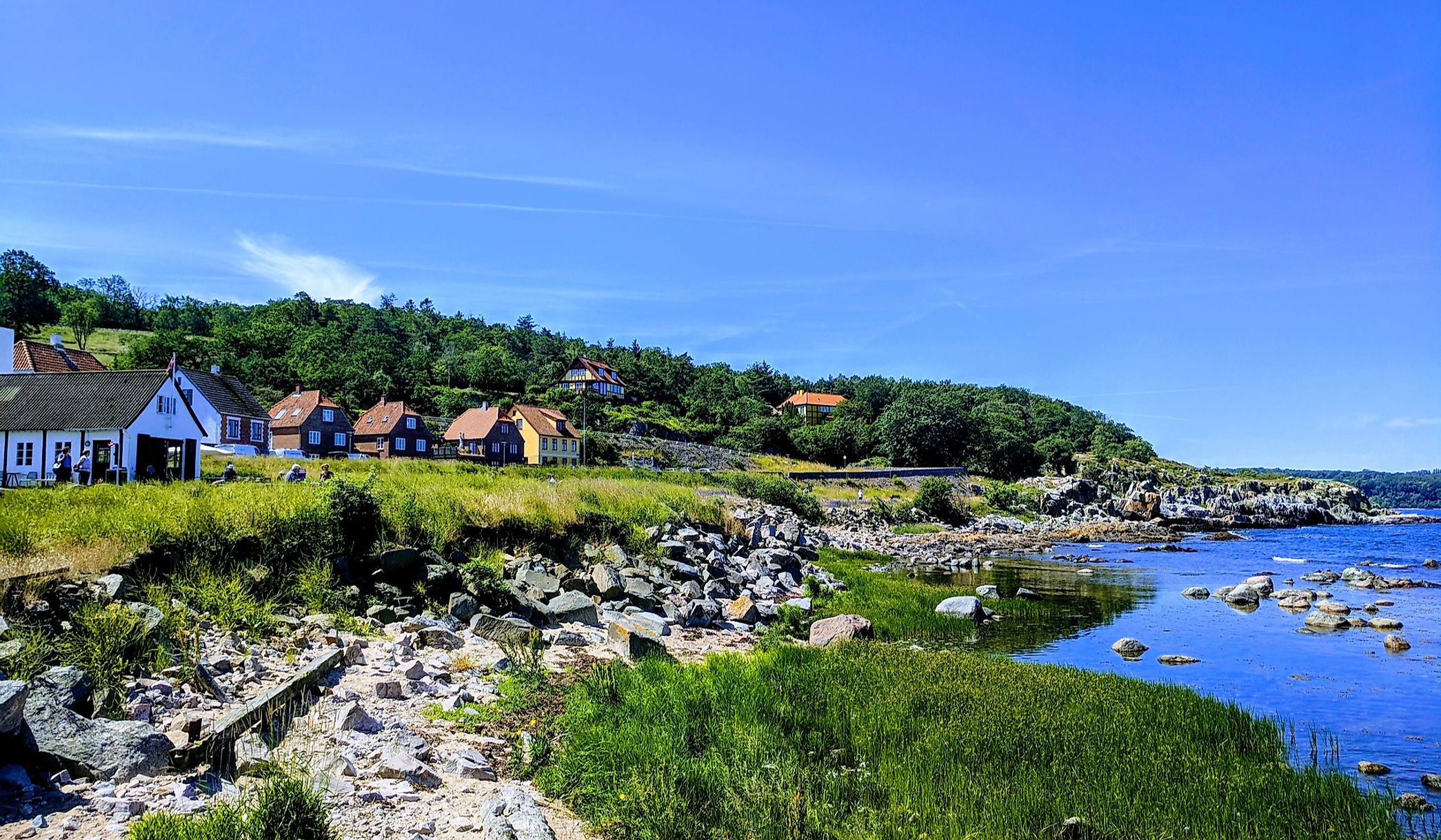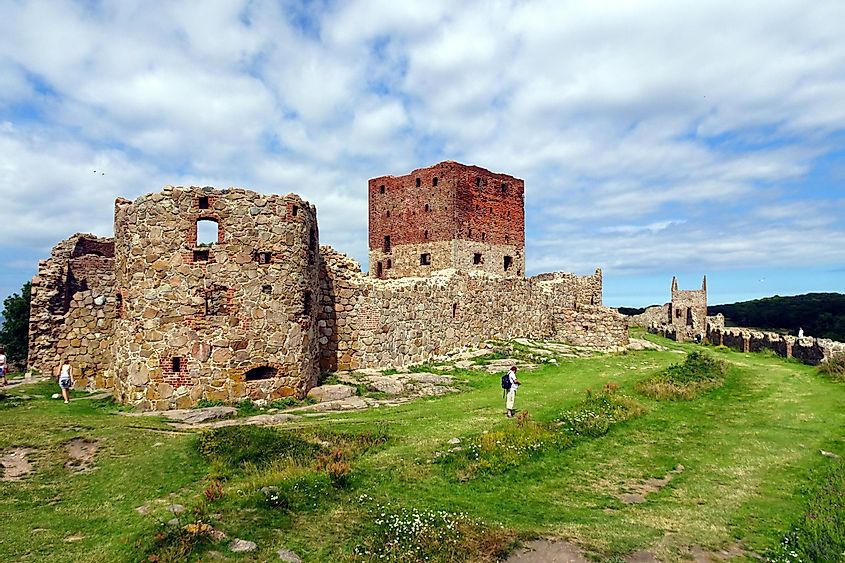
Bornholm
Denmark (officially, the Kingdom of Denmark) is a Scandinavian nation that is located in Northern Europe. Denmark comprises more than 440 named islands including Zealand, Bornholm, Funen, Falster, and Lolland. Covering an area of 588.36 km2, Bornholm is a small Danish island located in the Baltic Sea.
Bornholm is approximately 169 km southeast of the Danish capital city of Copenhagen, about 35 km southeast of the Kingdom of Sweden, to the north of Poland, and northeast of Germany.
Geography

Approximately two-thirds of the northern part of Bornholm Island is made up of granite rock formations, with centrally placed farmlands and forests, and rocky cliffs that line the coastline. The southern part of the island is characterized by an undulating surface of sandstone, shale, and limestone along with sand dunes that line the coastline. Located in the heart of Bornholm island in the Almindingen forest is Rytterknægten which rises to an elevation of 162 m and is the highest point on Bornholm. Due to its unique geology and rugged terrain, Bornholm is also often referred to as Klippeøen, which means "rock island."
Situated on the island’s westernmost point is Rønne which serves as the largest town and administrative center of the Bornholm municipality.
According to the Köppen climate classification, Bornholm island experiences an oceanic climate that is highly influenced by the Baltic Sea. The average summer, fall, and winter temperatures on the island are comparatively milder than the rest of Denmark and other Scandinavian countries. With sparse rainfall and less heat, the weather remains quite sunny during the summer months. The island is also sometimes referred to as Solskinsøen or "sunshine island" due to its sunny weather. The island’s climate favors the cultivation of the native Bornholm’s Diamond, a local variety of common figs on the island.
Brief History

The island was named Borgundarholm in the native Old Norse language while in the ancient Danish dialect, the island was named Borghand. The island was originally administered by Scanian Law, under the historic Swedish province of Scania. During the 10th century, Danish Vikings established bases on the island, and eventually, it became one of the most important stops along the Baltic Sea trade route. Several battles were fought between the Danish Crown and the Swedish See of Lund for control over the island. Subsequently, three districts (herreder) of the island were handed over to the archbishop by the Danish King. The Castle of Hammershus was constructed by the archbishop in 1250, and the remaining part of the island including its main Lilleborg fort was conquered by the archbishop in 1259.
Ownership of the island remained contested for 200 years. After the 1658 war, Bornholm along with some other regions was ceded to Sweden by Denmark under the Treaty of Roskilde. After a popular revolt in the same year, the inhabitants gifted the island to the Danish King Frederick III in 1660 under the Treaty of Copenhagen, on the condition that the island is never ceded again.
In 1940, during World War II, Bornholm was occupied by the Germans along with the rest of Denmark. The island was heavily bombarded in 1945 by the Soviet Air Forces and after the surrender of the German forces, the island was taken over by the Soviets. Bornholm Island was returned to Denmark on April 5, 1946.











